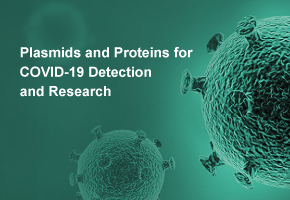Drone Sensor Market Upcoming Trends and Regional Forecast by 2031
The market for drone sensors is moving fast as drones keep
redefining sectors by providing a new dimension of precision,
efficiency, and flexibility. Agriculture to logistics, infrastructure
inspection to disaster management, drone sensors are increasingly becoming
indispensable in reshaping industries. The demand is being fueled by the need
for automation,
data insights, and non-invasive monitoring techniques, all of which are enabled
by the changing capabilities of drone sensors.
These sensors provide drones with the tools required to
gather crucial information, allowing companies to make smart decisions, improve
safety, and streamline operations in a vast array of applications. As
industries continue to appreciate the advantages of drone technology, the use
of sensors designed for a particular application is likely to expand
exponentially.
Key Drivers of Growth in the Drone Sensor Market
There are several drivers pushing the expansion of the drone
sensor market. The foremost and most important driver is the growing need for
real-time, high-accuracy data across industries. Drones with high-tech sensors
are able to capture data from remote locations, providing solutions that
previously were time-consuming, costly, and risky. Whether it is tracking crops
in agriculture, surveying infrastructure in construction, or conducting
surveillance in security applications, drones offer an effective, non-invasive
method to capture essential information.
Further, the increasing demand for automation across sectors
is also fueling the demand for drone sensors. Automation helps companies reduce
human errors, streamline processes, and improve productivity. Sensors can be
installed on drones that will be able to carry out inspections, environmental
monitoring, or good delivery on their own without needing human interaction,
thereby presenting companies with new avenues to enhance efficiency in
operations.
The growing use of drones across industries such as
agriculture, construction, energy, and logistics has further widened the market
for drone sensors. As industries realize the potential of drones to meet
particular challenges—such as crop health monitoring, structural inspection,
and real-time data collection—the demand for specialized sensors has become
apparent.
Technological Advancements in Drone Sensors
The technology used in drone sensors has improved
considerably over the last few years. Presently, drones are equipped with a
variety of sensors to suit various purposes and applications. Some of the most
notable sensor types utilized in drones are:
LiDAR Sensors: LiDAR sensors utilize laser pulses to sense
distances and construct accurate 3D maps. LiDAR drones are applied in tasks
such as topographic mapping, forest surveys, and environmental monitoring, with
high precision for tasks demanding accurate data.
Optical and Infrared Sensors: Applied for visual imaging and
thermal scanning, optical and infrared sensors allow drones to take images of
visible light and thermal information. Such sensors play an important role in
search and rescue, firefighting, and infrastructure inspection industries since
they can sense heat signatures or detect problems not visible to the human eye.
Multispectral Sensors: These sensors collect information in
various wavelengths of light and are well suited for agricultural use.
Multispectral sensors can be used in drones to track crop health, identify
disease, determine irrigation requirements, and streamline farm methods.
Ultrasonic Sensors: Mostly utilized for sensing obstacles
and evading collisions, ultrasonic sensors play a critical function to maintain
safe operations, particularly in complex settings such as urban or heavy forest
cover.
Radar and GPS Sensors: Radar sensors assist drones in
detecting obstacles in real-time, while GPS sensors offer accurate navigation
and positioning, which is critical for accurate flight routes and
location-based data gathering.
These advances in sensor technology have made drones capable
of executing more complex tasks, making them increasingly valuable across
industries.
Market Segmentation
By Sensor Type
·
Inertial Sensors
·
Image Sensors
·
Speed and Distance Sensors
·
Position Sensors
·
Current Sensors
By Platform Type
·
VTOL
·
Fixed Wing
·
Hybrid
By Application
·
Navigation
·
Collision Detection and
Avoidance
·
Data Acquisition
·
Motion Detection
·
Air Pressure Measurement
·
Power Monitoring
By End-User
·
Energy and Utilities
·
Precision Agriculture
·
Media and Entertainment
·
Defense
·
Law Enforcement
·
Security and Surveillance
Key Players
·
AMS AG
·
Bosch Sensortec
·
Flir Systems
·
KVH Industries
·
Lord Microstrain
·
Raytheon
·
Sparton Navex
·
TDK Invensense
·
TE Connectivity
·
Trimble
Geography
·
North America
·
Europe
·
Asia-Pacific
·
South and Central America
·
Middle East and Africa
Challenges and Considerations
Even with the speedy expansion of the drone sensor market,
there are some obstacles that must be overcome. The regulatory environment
represents one of the primary hindrances. Governments are trying to create
broad-ranging regulations as drones gain popularity in both private and
commercial arenas. Balancing regulation and innovation will be fundamental to
continued growth in the market.
Moreover, although sensors on drones are becoming cheaper,
the expense of sophisticated sensors like LiDAR or thermal imaging remains a
constraint for small and medium-sized businesses.
Conclusion
The drone sensor industry is leading the charge in
revolutionizing industries with the force of precision and automation. With
advancing sensor technology, drones will be more and more counted upon to
gather data, increase operational efficiency, and improve safety across a vast
array of uses.
With increasing demand, technological advancements, and
growing use cases, the future of the drone sensor market is going to continue
its upward trajectory. As much as regulatory challenges and costs are
hindrances, potential gains from drone sensors—running from environmental
monitoring to infrastructure management—are a reason in themselves that
validates their necessity to drive tomorrow's industries.
- Like
- Reply
-
Share
About Us · User Accounts and Benefits · Privacy Policy · Management Center · FAQs
© 2025 MolecularCloud



